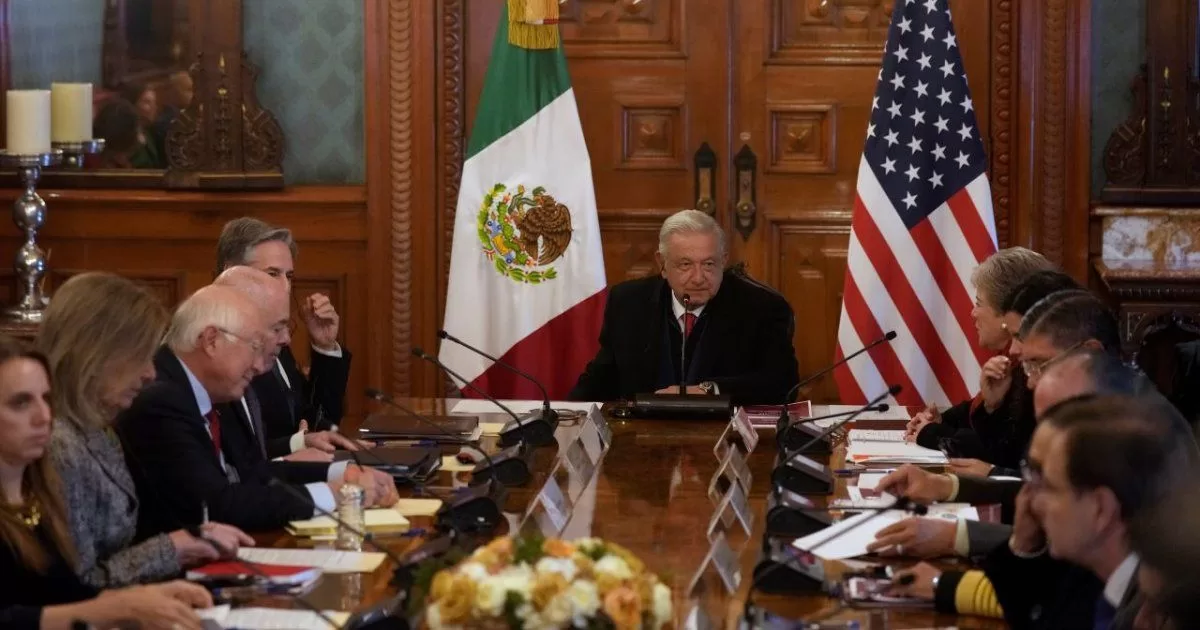The impact seems irregular more than a week after the temporary suspension imposed by the United States came into force. Shelters in southern Texas and California have plenty of space, while up to 500 daily deportations from Arizona burden those in the state of Sonora, Mexico, their directors said.
“We have to turn people away because we can’t, we don’t have space for all the people who need shelter,” lamented Joanna Williams, executive director of the Kino Border Initiative, which can house up to 100 people at a time.
About 120 people occupy the San Juan Bosco shelter in Nogales, across the border from the Arizona city of the same name, up from about 40 before the policy change, according to with its director, Juan Francisco Loureiro.
“We have had a fairly notable increase,” Loureiro said. Most of them are Mexican, including families and adults. Mexico also agreed to accept deportees from Cuba, Haiti, Nicaragua and Venezuela.
Majority Mexicans
A shelter in Agua Prieta, a remote town on the border with Douglas, Arizona, also began taking in more Mexican men, women and children last week: 40 on Sunday, more than 50 on Monday and then about 30 a day. Like those sent to Nogales, most entered the United States further west, along the Arizona-California state line, according to Perla del Ángel, a worker at the Exodus Migrant Attention Center.
Mexicans make up a relatively high percentage of border arrests in much of Arizona compared to other regions, which could help explain why Nogales has been affected. Mexicans are often the easiest nationality to deport because officials only have to drive them to a border post instead of arranging a flight.
But in Tijuana, directors of four large shelters said this week that they have not received a single deported migrant since asylum restrictions went into effect. Al Otro Lado, a migrant advocacy group, counseled only seven of them on the first day of operation of an information booth at the main crossing where migrants are deported from San Diego.
“What we have right now is a lot of uncertainty,” said Paulina Olvera, president of Espacio Migrante, which houses up to 40 people traveling as a family, predominantly from Mexico, and which has others sleeping on the sidewalk outside. “So far, what we have seen is the rumors and the impact on people’s mental health. “We haven’t seen any returns yet.”
Thousands deported
Officials of the president’s government Joe Biden They said last week that thousands of people have been deported since the new rule went into effect on June 5, suspending asylum whenever the number of arrests for crossing without legal authorization reaches 2,500 in a single day. The officials, who briefed reporters on condition of anonymity, were not more specific. The suspension will remain in effect until the number of arrests falls below a daily average of 1,500 for seven days.
“We are prepared to repatriate a record number of people in the coming days,” Blas Nuñez-Neto, undersecretary of homeland security for border and immigration policy, told Spanish-speaking reporters after the policy announcement.
At this time, the Department of Homeland Security has not responded to a request for figures, nor has Mexico’s National Immigration Institute.
Impact on the Mexican side
Meanwhile, Mexican authorities have rounded up people who entered without legal authorization and moved them far south of the border area.
Mexico’s border cities have come under strain from previous changes in U.S. policy, including the Trump presidency’s “Remain in Mexico” program, during which some 70,000 people waited in Mexico for their U.S. immigration court hearings. . Immigration advocates on Wednesday filed a federal challenge against the Biden administration’s policy change.
Some advocates worry that more people will languish in shelters while trying to enter legally using the CBP One app, which makes 1,450 appointments a day. Some of the people housed at Espacio Migrante have been trying for eight months to get an appointment through CBP One, Olvera said.
Casa del Migrante, in Matamoros, is currently operating at about half capacity in a network of shelters across the city that together can house up to 1,600 people. But Berta Alicia Domínguez, its director, expects a bottleneck to occur as more migrants compete for spots through CBP One, and she seeks support from the Catholic diocese and nongovernmental organizations.
“Food is going to be scarce for migrants and we hope that organizations can support us in this situation, because feeding 500 people is something difficult,” Domínguez stressed.
Piedras Negras is across the border from Eagle Pass, Texas, a flashpoint in Gov. Greg Abbot’s battle with the Biden administration over immigration enforcement. Migration flows peaked in December, when Casa del Migrante Frontera Digna housed up to 1,000 migrants.
The shelter had fewer than 150 people on Thursday, but Isabel Turcios, the shelter’s director, is concerned about the unintended consequences of exempting unaccompanied children from Biden’s order.
“We are afraid that many mothers will come and start throwing their children. That is a very big fear that we also have,” said Turcios.
Source: With information from AP



